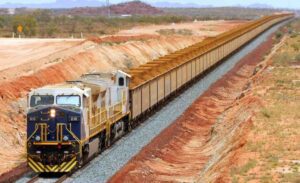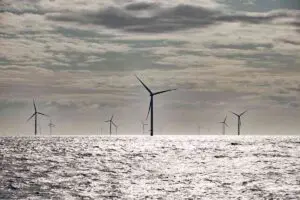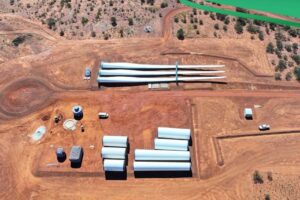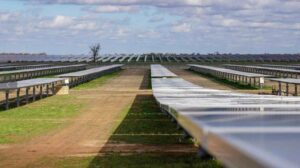The fate of a $1 billion-plus, 900MW wind farm proposed for Robbins Island off north-west Tasmania remains in limbo, with the state’s Environment Protection Authority confirming it will appeal the project’s approval by the Tasmanian Civil and Administrative Tribunal.
The notice of appeal by the Tasmania EPA marks just the latest challenge to the potentially huge wind farm which has faced opposition from community and green groups since it was first proposed for development.
Critics, including the Bob Brown Foundation, say Robbins Island is the wrong place to build a wind farm due to its role as a habitat for the critically endangered orange bellied parrot and other wildlife, including wedge-tailed eagles and Tasmanian devils.
In 2022, the EPA approved the project – but on the condition the developers agreed to shut down its 100 turbines for five months every year when the parrot migrates.
That decision was overturned, however, after developer Acen Australia successfully appealed to the Tasmanian Civil Administrative Tribunal.
Now, TasCAT’s decision will be appealed in the Supreme Court by the EPA, based on its failure of to consider the State Coastal Policy when allowing the construction of a wharf and access through sensitive dunes on the east of the island.
“The EPA required Acen Australia to provide information about the application of the Tasmanian State Coastal Policy on the proposed development of the wind farm, including the construction of the wharf,” an EPA spokesperson told the Hobart Mercury.
According to the spokesperson, the EPA Board received advice last week that it had “erred at law” by neglecting to seek information from Acen on clause 1.4.2 , which says “development on actively mobile landforms such as frontal dunes will not be permitted except for works consistent with Outcome 1.4.1”.
Outcome 1.4.1 states that “areas subject to significant risk from natural coastal processes and hazards such as flooding, storms, erosion, landslip, littoral drift, dune mobility and sea level rise will be identified and managed to minimise the need for engineering or remediation works to protect land, property and human life.”
This oversight, the EPA says, has left its board with “no option other than to lodge the appeal.”
“We welcome the EPA taking a stand to protect the sensitive dune ecosystems from a destructive and unnecessary development,” said Bob Brown Foundation campaigner Scott Jordan in a statement on Wednesday.
“Big corporations must not be allowed to ignore the rules. It is an important role for the EPA to be able to take cases like this where an approval clearly breaches environmental and planning law.”
“Notably, the current Liberal government’s fast-tracking of future wind farms as projects of State Significance will remove appeal rights giving a free pass to developers who ignore laws that protect our environment. Unfortunately, Labor has been urging the Liberals to go faster.”
Putting aside the project’s environmental impacts, critics of Robbins Island wind farm also argue that a project of that size is redundant in the majority hydro-powered state – and question whether it is economically viable, given the grid and other infrastructure needed to support it.
“It’s dependent on Marinus Link taking the energy to the mainland …so it’s not to meet Tasmanian demand. It is mega-development that is speculative in the national energy market,” former Greens leader Christine Milne and member of the Bob Brown Foundation told RenewEconomy in February.
“So the question becomes, why would you even consider permitting that, when it’s going to have such an adverse impact on the ecosystem as a whole and on so many endangered species?
“The only argument they have for destroying biodiversity is …’we can use the renewable energy.’ The question is, do we need that renewable energy from that particular site?
“And is it economically viable to produce it from there or is there a feasible alternative? And in the case of Robbins Island, of course there are feasible alternatives.”
A counter appeal against the TasCAT decision has also been lodged with the Supreme Court by the community-based Circular Head Coastal Awareness Network.
Meanwhile, the huge project is in the process of being assessed at the federal government level under the Environment Protection and Biodiversity Conservation Act – a process the Tasmania premier said last month was “delaying” important progress.










